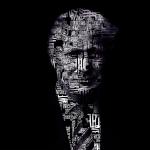America has long been the most religious of the affluent, western nations, having the most professing and practicing population. (A couple of the nearly 100-percent-Catholic countries are close, but only Canada otherwise.) Explaining this aspect of American exceptionalism has preoccupied many scholars of religion. Part of the answer is that since the early 1800s the United States has had no established religion and has had instead a free “marketplace” of religion. Suppliers—that is, churches and ministers—emerged to meet nearly every religious “taste” people might have.
The early days of this market had all the features of an unsettled market free-for all, exacerbated by the unsettled features of American law. Today, our religious “market” is far more orderly, but we still shop around.
Hawking
The nineteenth century saw a fervor of religious inspiration, entrepreneurship, and frantic competition. In 1800, most Americans belonged to no church or denomination; many others were only nominally committed to the stuffy and stern established churches of several states. But now, a host of young, energetic, and plain-speaking preachers evangelized all across the country for new denominations like the Methodist Episcopalians, Disciples of Christ, and dissident Baptists. The Catholic Church, rooted in a continent where people were born into a faith and never left it, was shocked by the competition. One priest dispatched to Maryland complained in 1821, “There are Swarms of false teachers [Methodist preachers] all through the Country, in every School house, in every private house—you hear nothing but night meetings, Class meetings, love feasts &c; &c.;” Historian of religion Martin Marty described “a competition in which the fittest survived,” one in which backwoods ministers found that their “first enemy was neither the devil nor the woman but the Baptist”—or any number of evangelists. (Later in the century, even atheists came together in formal association.)
Energetic ministers proselytized through missions, camp revivals, and aid to the spiritually and often materially destitute. They heaped scorn on what they considered to be overeducated, overfed, and overly boring reverends of old-line denominations. Theologically, the new faiths attacked the doctrine of predestination that favored elites and threatened eternal damnation. Most instead preached a happier theology of individual conscience and democracy, praising the Lord, as one hymn had it, because “Thy saving grace for all is free / And none are doom’d to misery.” Everyone can be reborn to salvation.
Read the rest here















